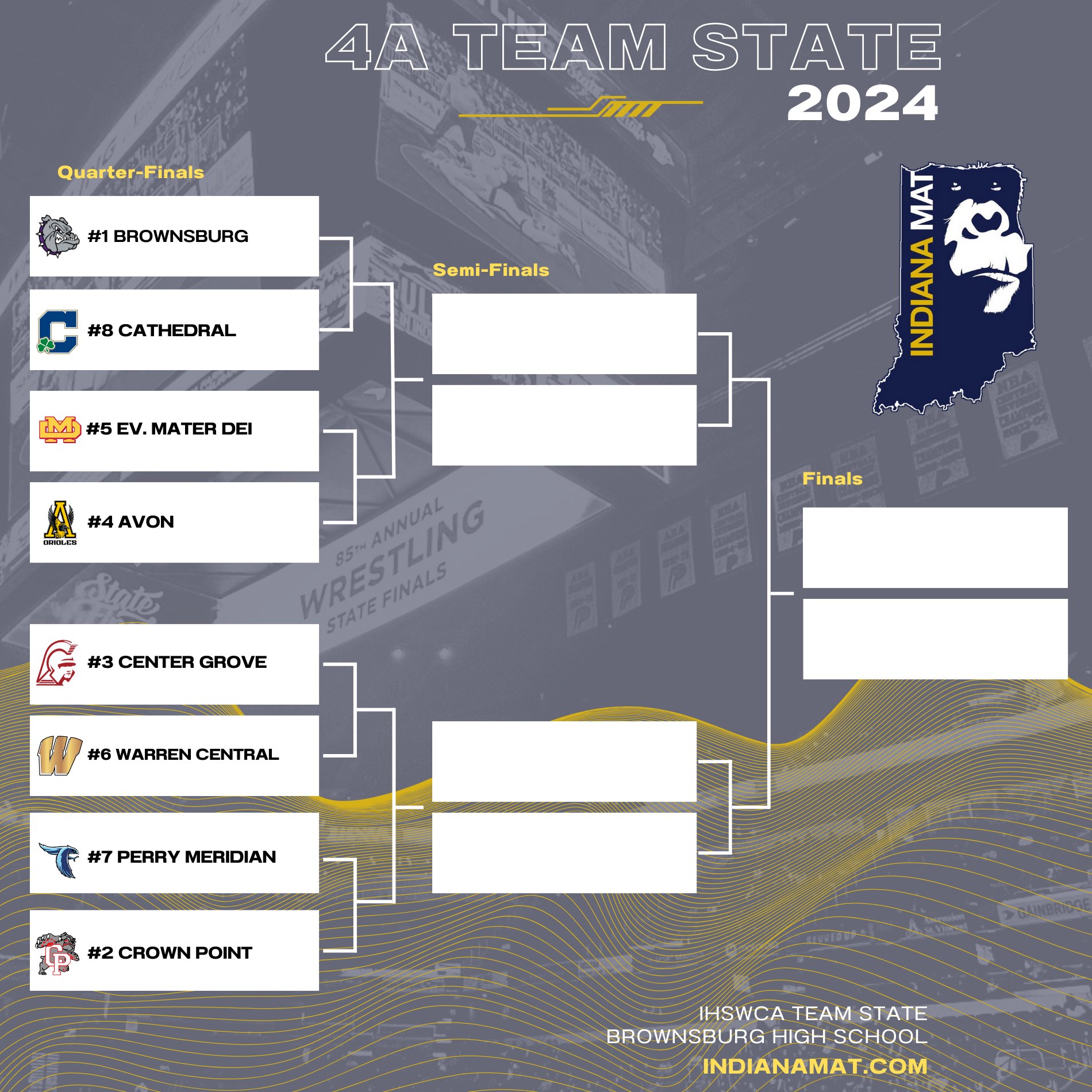The IHSWCA Team State is here! On January 6th, 2024, 1A through 4A will compete to see who is the best in their respective class.
Locations
1A
Rochester High School
1645 S Park Rd, Rochester, IN 46975
2A
Jay County High School
2072 IN-67, Portland, IN 47371
3A
Franklin Community High School
2600 Cumberland Dr, Franklin, IN 46131
4A
Brownsburg High School
1000 S Odell St, Brownsburg, IN 46112
Teams
1A
Adams Central, Bluffton, Cascade, Cowan, North Miami, Prairie Heights, Rochester, Southmont, Tell City, West Central
Vote-In: South Adams and Faith Christian
2A
Bellmont, Delta, Hamilton Heights, Heritage Hills, Jay County, Maconaquah, Monrovia, New Prairie, Wawasee, Western
Vote-In: Oak Hill and Rensselaer Central
3A
Columbus East, Dekalb, Fort Wayne Snider, Mishawaka, Roncalli, Terre Haute South
Vote In: East Noble, Floyd Central, Franklin Community, Greenfield-Central, Hobart, New Palestine
4A
Brownsburg, Center Grove, Crown Point, Indianapolis Cathedral, Perry Meridian, Warren Central
Vote In: Avon and Evansville Mater Dei
Updates & Streaming
The event can be streamed through FloWrestling.
Updates can be found on TrackWrestling.
Brackets
Thank you to Joe Caprino & IndianaMat for putting together the bracket graphics.
1A
2A
3A
4A
Qualification Procedures
Below are the qualification procedures for 2023. These qualifications are subject to change yearly and are approved by IHSWCA State Duals selection committee.




